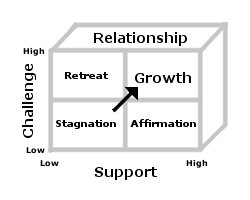

Instructor: Dr. Craig Ott
Trinity Evangelical Divinity School, Associate Professor of Mission and Intercultural Studies
http://www.tiu.edu/divinity/academics/faculty/ott
2007/11/08 (Rough Notes)
Objectives
- Affective Behavioral – Character Formation (seems to be Jesus’ focus with His disciples)
- Cognitive – Understanding truth (Western churches’ apparent focus)
- Instrumental – Skills
What did Jesus training program look like?
- “Volunteerism” is not in the picture. People should be selected through prayer. Jesus prayed and challenged others to join him. [and rejected some who wanted to; former Demoniac]
- Not in a classroom but in the field. Rooted in prayer. Challenging their faith.
- First year, Jesus modeled ministry. Then taught them. Then sent them out for field experience. Later he held a debriefing. One debriefing He said “…but rejoice that your names are recorded in heaven.” (Luke 10:20) Don’t focus on success or failure, but on your relationship with God.
- Apprenticeship- Even formally trained Paul, choose Jesus’ model of apprenticeship. Lay ministry seems to need more of this.
Means of Equiping
- Modeling – Basic Skills. Little Theory. “Monkey see; Monkey do” Short term process. ex. house visitation, etc.
- Coaching – Think sports. Learner is more interactive. Skill more complex. Coach needs to invest more time. If you have time restriction, be creative; met for lunch. ex. Cell Group Leader
- Mentoring – Less skills and more character development. Intense & intimate. Takes time and only a few people at a time possible (1-on-1 or 1-on-2~3). For leaders or potential leaders.

Modeling and Coaching are special skills focused. But, mentoring is special persons focused. Mentoring is time-intensive but it allows for multiplication. Caution: if the church is not informed on what you are doing, it will look like favoritism to them. But Jesus had a similar pattern; 3 close disciples, then the twelve, the 72, and finally the multitude… He was not equal with His time with each person.